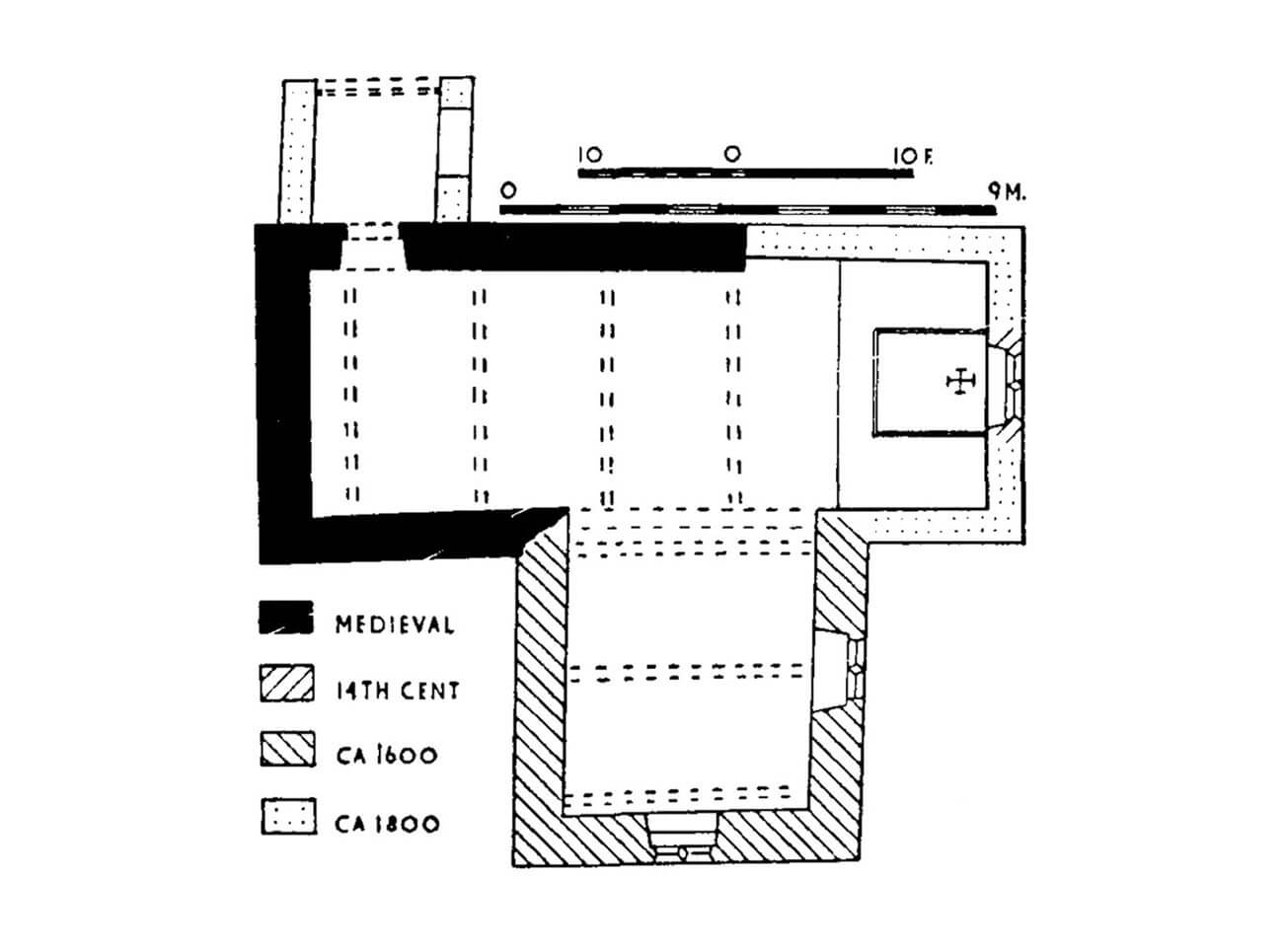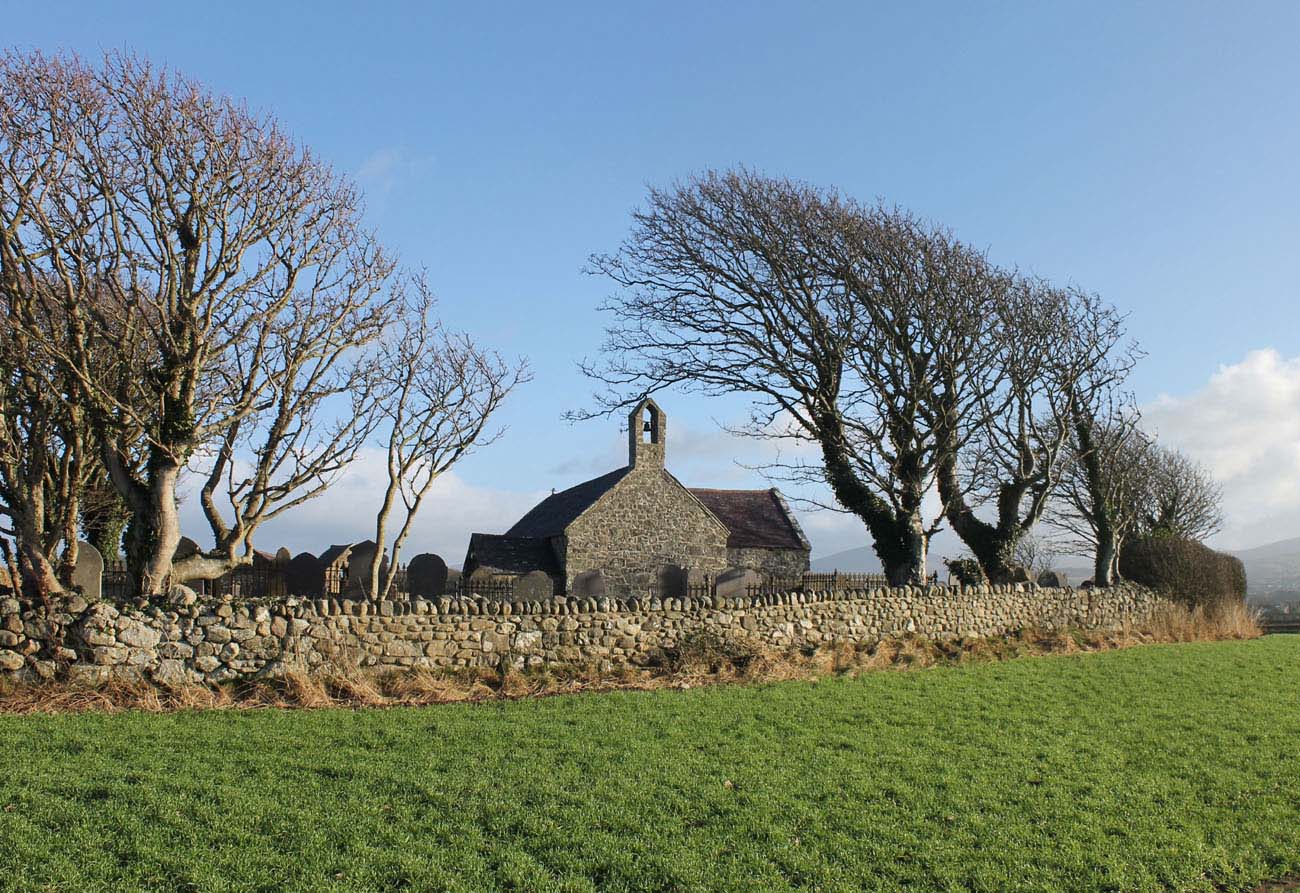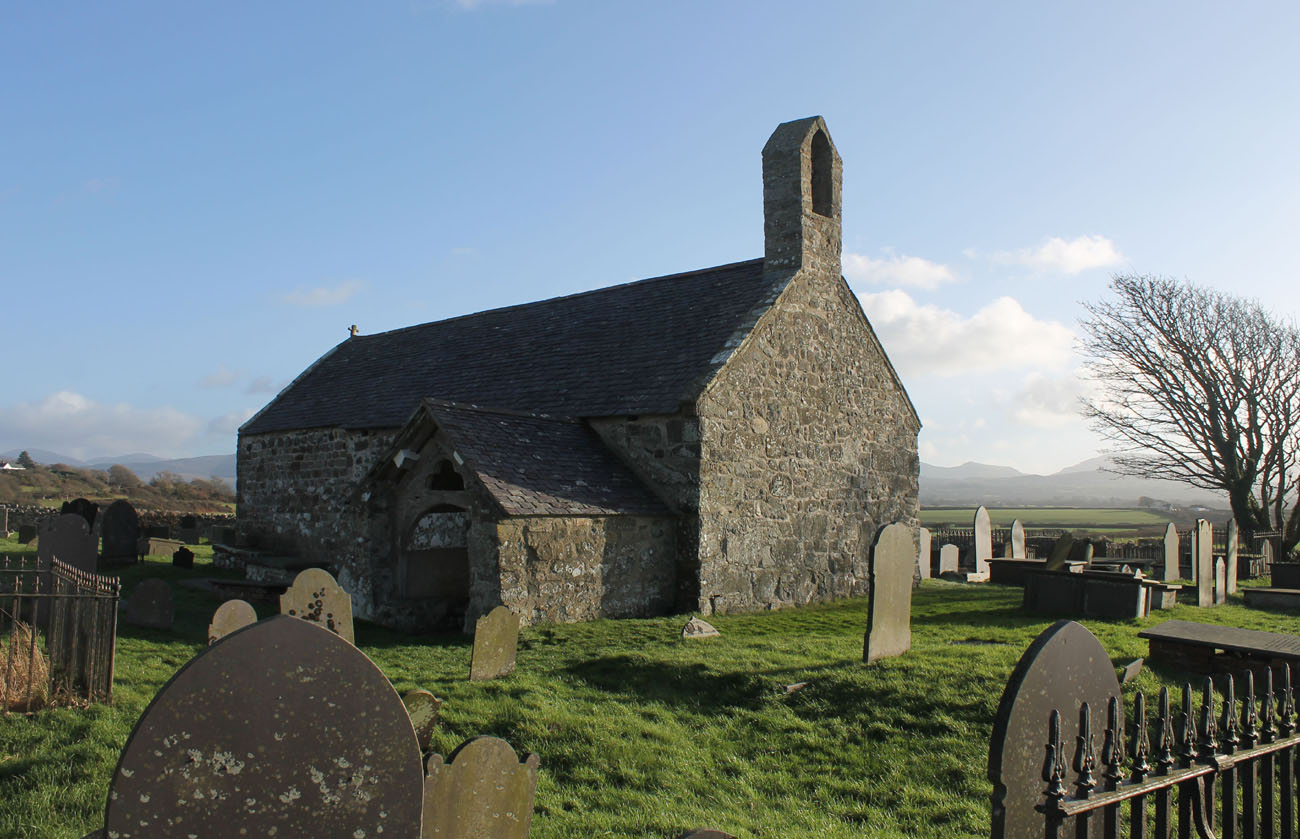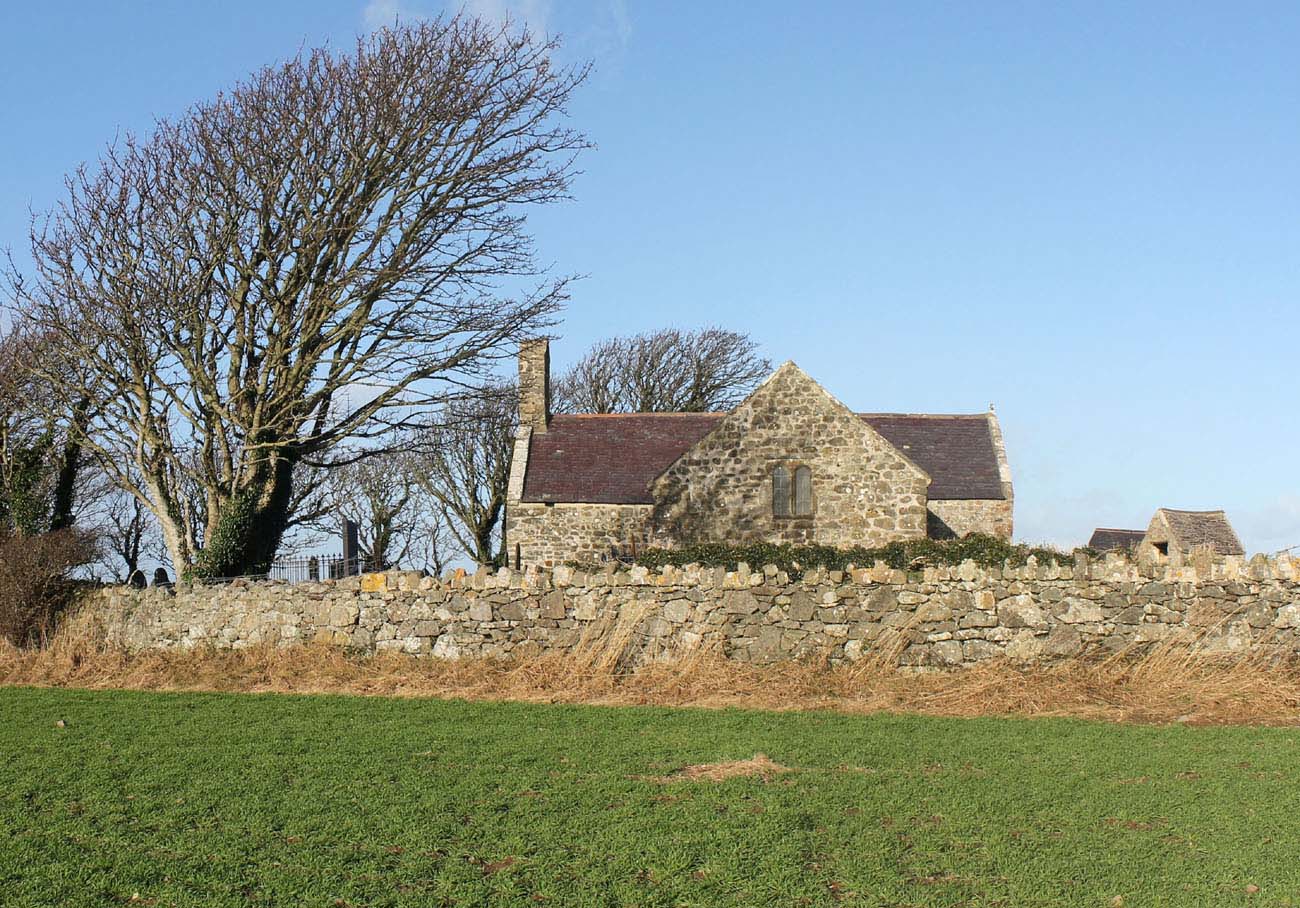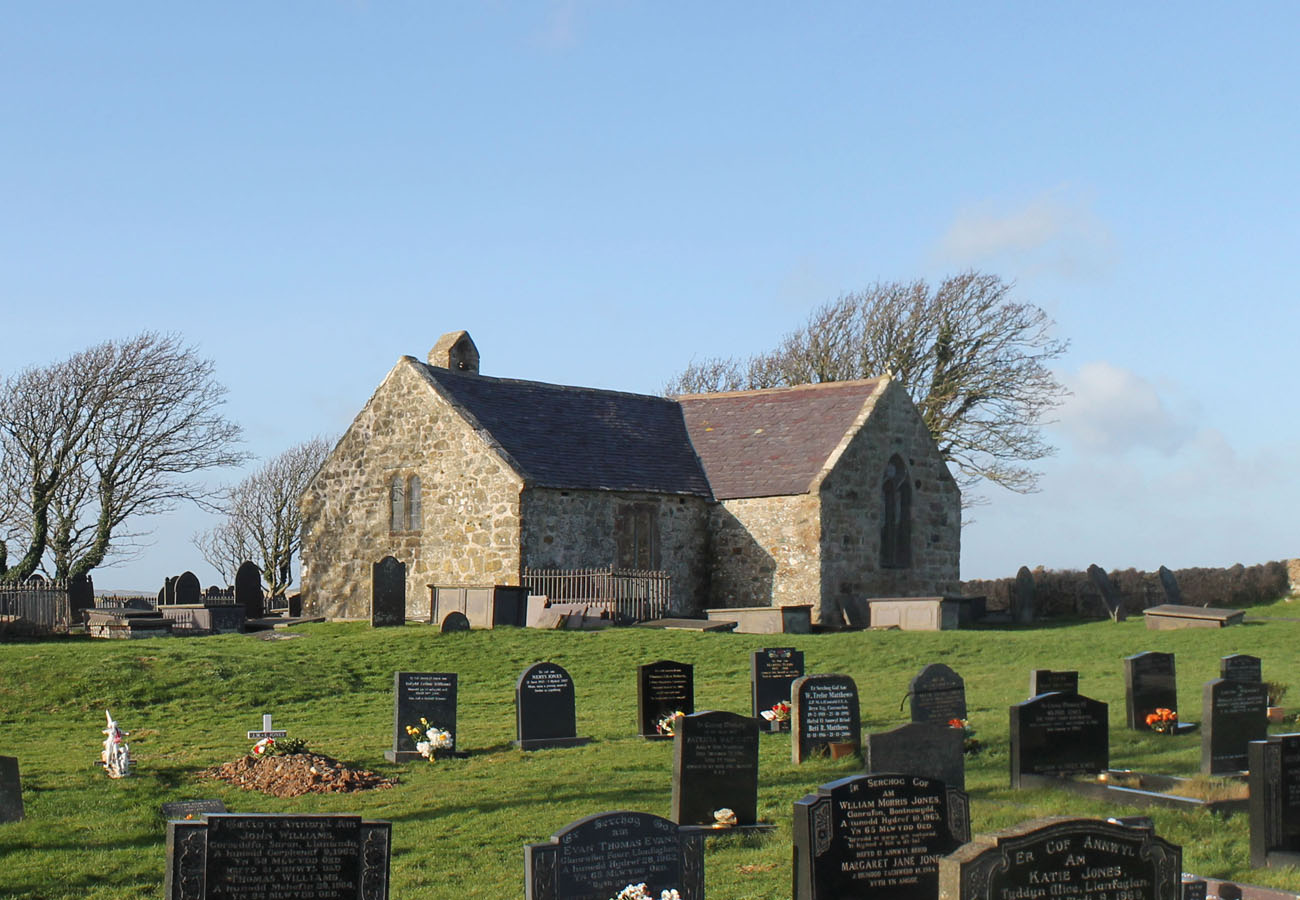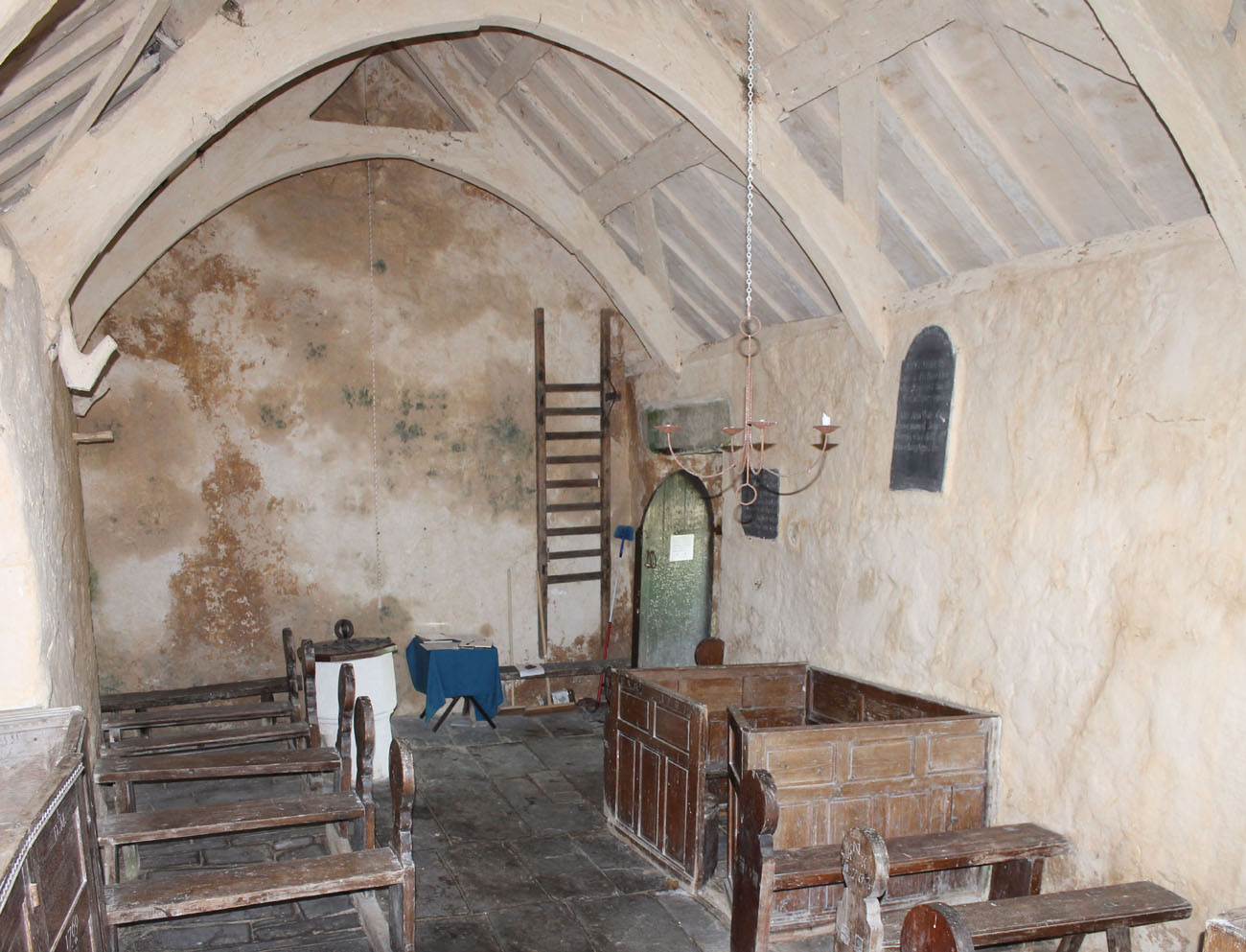History
St. Baglan’s church in Llanfaglan was built in the 13th century, but the cemetery surrounding the building and the stones from the 5th and 6th centuries in its structure, indicate that it was built on the site of a much older temple, which according to tradition is attributed to a saint from the 7th century, Baglan ap Dingad. At the end of the 16th or at the beginning of the 17th century, a chapel was added on the southern side. In 1800 the chancel was rebuilt, and the porch on the north side was added, but perhaps with the use of timber from the old chancel.
Architecture
The church originally consisted of a rectangular nave and probably an externally separated chancel, likely covered with separate roofs (the nave was 4.4 meters wide and 7.9 meters long, while the medieval chancel was to be 3.4 meters wide and 2.8 meters long) In the early modern period, a large chapel was added on the south side. What is very unusual, the west part of the church (nave) did not receive windows, and the east part (presbytery) received only one two-light window on the eastern side. The chapel, also described as the southern transept, was illuminated by a window from the south and east. The entrance was placed in a plain portal in the western part of the northern wall of the nave. The interior was covered with an open, wooden roof truss.
Current state
Today, the church is exceptionally picturesquely situated and combines medieval (nave) and early modern elements (chapel, porch, rebuilt chancel). The eastern window was built in the 14th century and was put again in the wall during the reconstruction in the 19th century. Above the entrance portal, there is a stone lintel with an inscription from the 6th century. Inside, the walls are plastered and whitewashed; just like the wood of the roof truss. The floor is covered with slate plates. There is no division between the nave and the chancel, and the transept is completely open to the rest of the church. From the original furnishings, you can see a baptismal font from the 13th or 14th century.
bibliography:
Salter M., The old parish churches of North Wales, Malvern 1993.
The Royal Commission on The Ancient and Historical Monuments and Constructions in Wales and Monmouthshire. An Inventory of the Ancient and Historical Monuments in Caernarvonshire, volume II: central, the Cantref of Arfon and the Commote of Eifionydd, London 1960.

